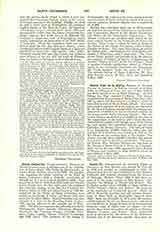

Santa Fe, Archdiocese of (SANCTAE FIDEI IN AMERICA), in New Mexico, was erected by Pius IX in 1850 and created an archbishopric in 1875. It comprised at first the three territories of New Mexico, Colorado, and Arizona, detached from the Diocese of Durango, Mexico. Since 1868 it has been restricted to the larger portion of New Mexico. Suffragans: the Bishops of Tucson and Denver. The Catholics number about 150,000, of whom 12,000 are Pueblo Indians (Tiguex and Quirix); the majority of the remainder are of Spanish descent. There are (1911) 50 parish churches and 350 mission chapels, most of them built or thoroughly repaired since 1852; these are attended by 70 priests, 50 seculars, and 20 regulars (Jesuits and Franciscans); each priest is a missionary in charge of from six to ten scattered missions, some of them very far apart. Of the priests, there is but one native; the others are French, Belgian, German, and Italian. Their ministerial work is governed by the decrees of the Baltimore Council and of the diocesan synods; they have ecclesiastical conferences and annual retreats; they form also among themselves a Clergy Relief Union, incorporated, and they are aided by 160 religious: Christian Brothers, Sisters of Loretto, of Charity, of the Most Blessed Sacrament, of St. Francis, and of the Sorrowful Mother.
Despite the increase in recent years of English-speaking people and the exclusive teaching of English in the schools, the diocese at large still is a Spanish-American community. The assimilation of Mexicans and Indians with the Americans, desired by some and dreaded by many, is an arduous task. All the priests speak both English and Spanish, besides other languages; but Spanish today is and must be used in the confessional and from the pulpit, except in a few cities (Santa Fe, Albuquerque, Las Vegas, Raton, and Roswell) where both languages are used. Likewise some of the old Spanish customs are retained, such as the administration of confirmation to infants. “Roma non objiciente”, the privileges of Spain in regard to fast and abstinence are still in vogue, and the clergy live on the offerings of the faithful without regular salaries. Education, when the diocese was erected, was limited to the teaching in Spanish, exclusively, of the primary elements of religion, reading, and writing, by either the priests or lay teachers. Today there are in the archdiocese: a college for boys (Santa Fe); a high school (Albuquerque); eight academies for young ladies; two boarding schools for Indians; parochial schools in Santa Fe, Albuquerque, Las Vegas, Bernalillo, Jemez, Pena Blanca, Folsom, Goswell, and Gallup, with an average, daily increasing, of 4000 children under Catholic care, despite the poverty of the people, and the moneyed competition of the Presbyterian and Methodist missions, which have selected New Mexico as a field of operation. There is also in the diocese an orphan asylum for girls, and four sanatoria with hospital annexed, conducted by sisters, at Santa Fe, Albuquerque, Las Vegas, and Roswell. The flourishing condition of the diocese is due to the zeal of: Archbishop Lamy (1850-85); Archbishop Salpointe (1885-94); Archbishop Chapelle (1894-97); Archbishop Bourgade (1898-1908) who built the cathedral at Tucson; and Archbishop Pitaval (1909-); and of the pioneers: Very Rev. P. Eguillon, Revs. G. J. Macheboeuf (afterwards Bishop of Denver), J. B. Salpointe, Gabriel Ussel, J. M. Coudert, A. Truchard, J. B. Ralliere, J. B. Fayet, J. Fialon, C. Seux, A. Fourchegu etc.
The relations between Church and State authorities are harmonious. Mass is said and catechism taught at the penitentiary and at the Government Indian school; at every Legislature a Catholic priest is chosen for chaplain and in nearly all country schools the teachers are Catholics.
JULES DERACHES

